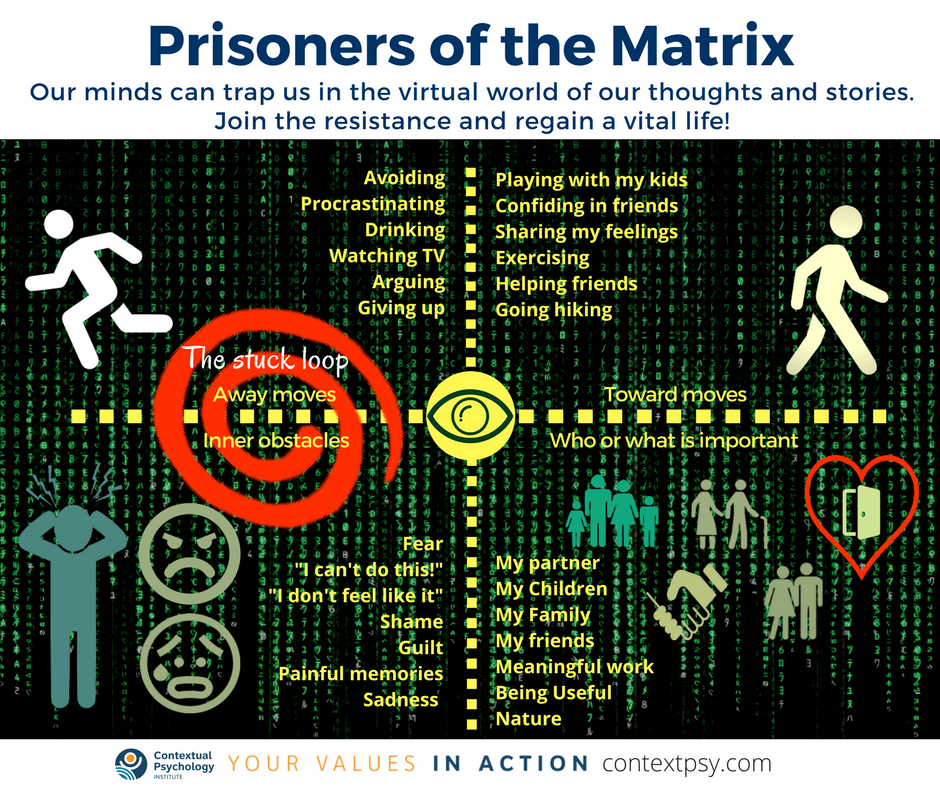In the famous movie, the Matrix, the Hero Neo discovers that, far from living his real life, he is a prisoner of the Matrix, a network of computers that feeds on humans’ life energy and traps them in a virtual world that denies them their true potential. To free himself from the Matrix, Neo joins the resistance of conscious humans.
We too are prisoners of a virtual world. But whereas what traps Neo are the 0s and 1s of digital information, our Matrix is made up of words stringing into thoughts stringing into stories. Thoughts can keep us stuck. And stories about what we are: anxious, depressive, shy, angry, losers — or special either in our talents or our suffering — can stop us from behaving the way we would really want to.
For over 4,000 years, Buddhist teachings offer a path of liberation: learning, through meditation to notice the productions of our minds so that we don’t become their unwitting slaves. More than ever, these practices can be helpful. Today, the behavioral science that undergirds Acceptance and Commitment Therapy (ACT) offers a more direct path to liberation.
A simple sheet of paper can help reveal how our Matrix works and shine a path of liberation.

On a piece of paper, draw two intersecting lines, draw an arrow at both ends of the horizontal line and write “ Toward ” to the right and “ Away ” to the left.
Bottom right write the names of people and aspects of life that are important to you. Bottom left, write what inner obstacles (thoughts, emotions, feelings, memories or bodily sensations) can show up and get in the way of initiating actions to move toward who or what is important to you. Common obstacles: fear, painful memories, negative thoughts, etc.
Top left write things that you do (and that we could see you do on film) to move away, gain relief from or under the control of your inner obstacles. Finally, top right, write things that you could be seen doing (I you were filmed) to move toward who or what is important to you.
Draw a circle in the middle and write the name of the person who chooses who or what is important to you. This person can also notice your inner obstacles and tell if what you do is more to move toward who or what is important or away from what shows up and gets in the way.
Now take your pen and place it bottom left. Draw a half-circle going top left. If the bottom left stuff never came back stop right there. If it did come back, circle back down left. If you then did more away moves, circle back up left, and back down again if it ever came back, and so on. You have just revealed the stuck loops that keep you a prisoner of your matrix.
Practice sorting your experience and actions in the four quadrants of your matrix in a number of situations. You will soon notice that it becomes easier to choose to do a toward move even in the presence of the icky stuff bottom left. This skill is known as psychological flexibility and it can help us escape from the Matrix. In future blogs, we’ll explore how you can stay free.
